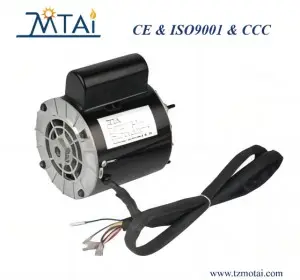The forward and reverse rotation principle of a single-phase motor is mainly realized by changing the wiring method of the motor terminals.
In a single-phase asynchronous motor, the phase sequence of forward and reverse rotation is achieved by changing the wiring method of the starting capacitor.
During forward rotation, the wiring of the starting capacitor is connected in parallel with the main coil of the motor.
In reverse rotation, the wiring of the starting capacitor is in series with the main coil of the motor.
In a single-phase induction motor, forward and reverse rotation are achieved by changing the wiring method of the motor terminals.
During forward rotation, the starting and ending ends of the motor are connected to the phases of the power supply respectively.
During reverse rotation, the start and end ends of the motor are connected to the opposite phase of the power supply.
When a single-phase sinusoidal current passes through the stator winding, the motor will generate an alternating magnetic field. The strength and direction of this magnetic field change sinusoidally with time. The power ranges from 120 to 750W. It is a single-phase motor that is started by adding an external capacitor to increase the starting torque. An external capacitor is connected in series with the secondary winding.
At the end of starting, the centrifugal switch is used to cut off the secondary winding and capacitor from the power supply. Like the BO2 type, it becomes a state where only the main winding is running and the secondary winding is idle. Capacitor starter motors have high starting torque but medium overload capability. Suitable for air compressors, refrigerators, washing machines, grinders, threshers, and water pumps.
Post time: Jan-16-2024









